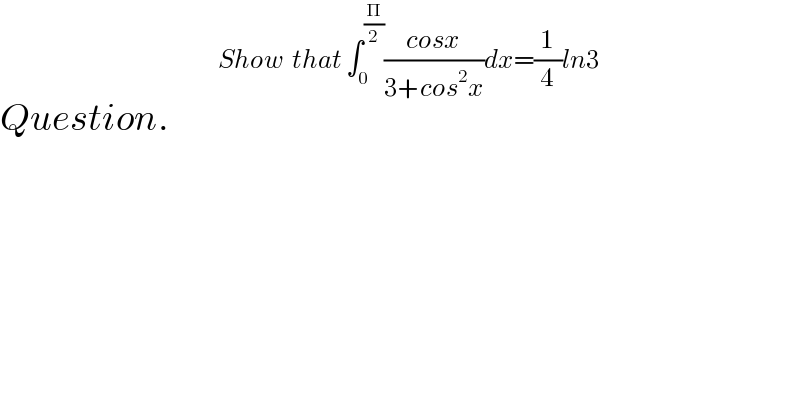
Question and Answers Forum
Question Number 83719 by Roland Mbunwe last updated on 05/Mar/20

Commented by mathmax by abdo last updated on 05/Mar/20
![I=∫_0 ^(π/2) ((cosx)/(3+cos^2 x))dx ⇒I =∫_0 ^(π/2) ((cosxdx)/(4−sin^2 x)) =_(sinx =t) ∫_0 ^1 (dt/(4−t^2 )) =(1/4)∫_0 ^1 ((1/(2−t))+(1/(2+t)))dt =(1/4)[ln∣((2+t)/(2−t))∣]_0 ^1 =(1/4)(ln(3)) =(1/4)ln(3)](Q83757.png)
Answered by jagoll last updated on 05/Mar/20

Commented by john santu last updated on 05/Mar/20

Answered by MJS last updated on 05/Mar/20
![∫((cos x)/(3+cos^2 x))dx= [t=sin x → (dt/(cos x))] =−∫(dt/(t^2 −4))=−(1/4)ln ∣((t−2)/(t+2))∣ = =−(1/4)ln ∣((sin x −2)/(sin x +2))∣ +C ⇒ ∫_0 ^(π/2) ((cos x)/(3+cos^2 x))dx=(1/4)ln 3](Q83746.png)
